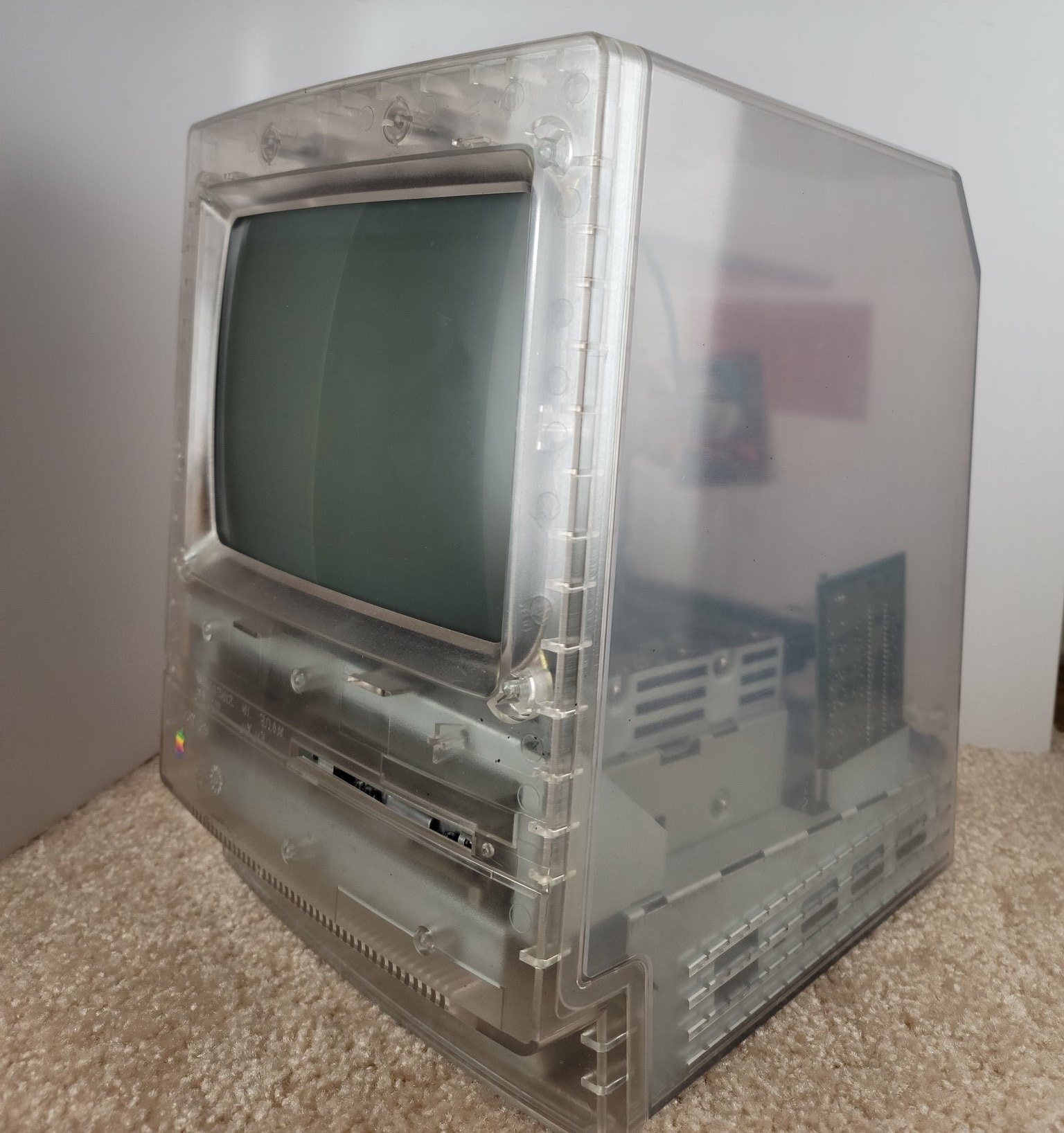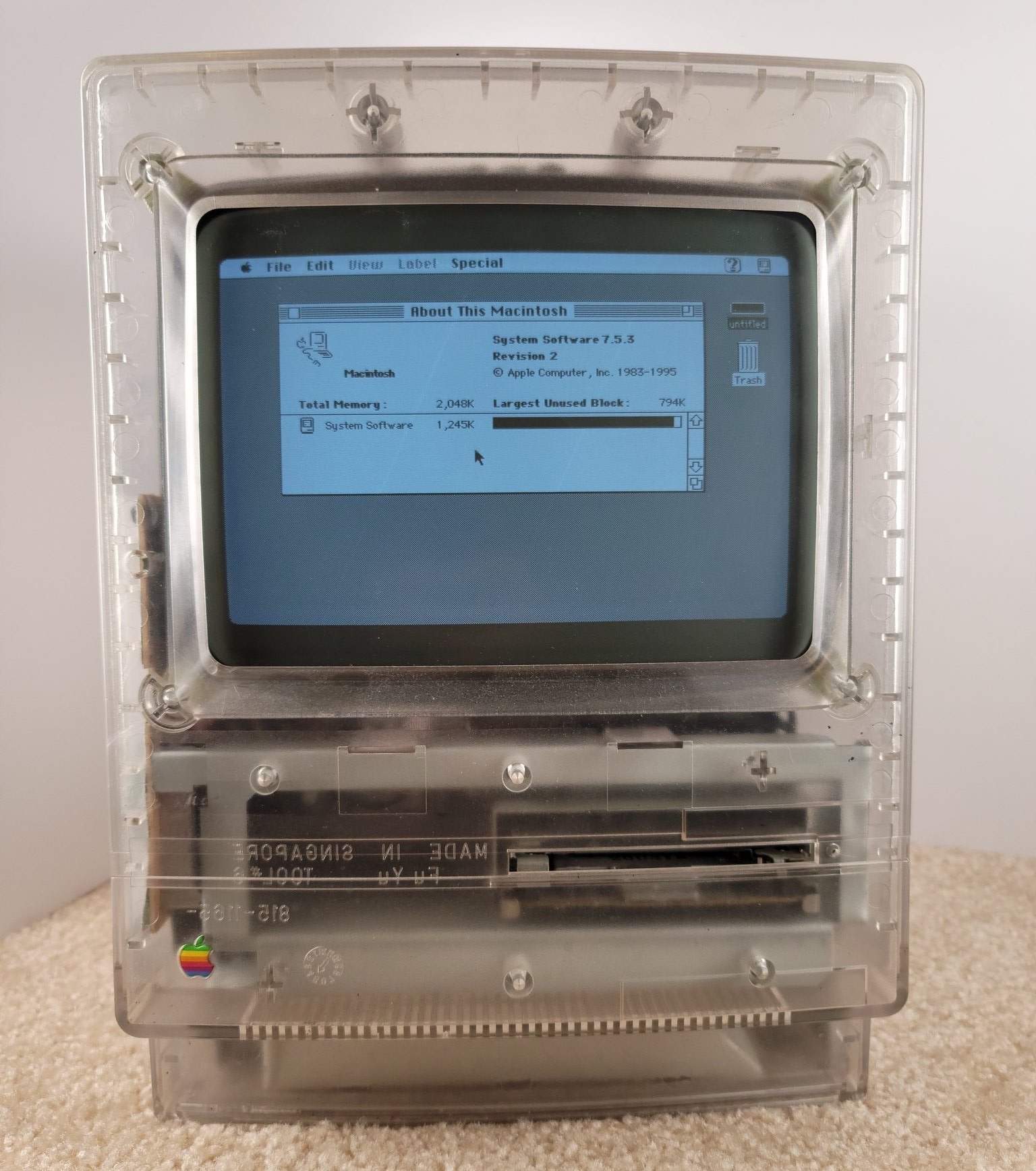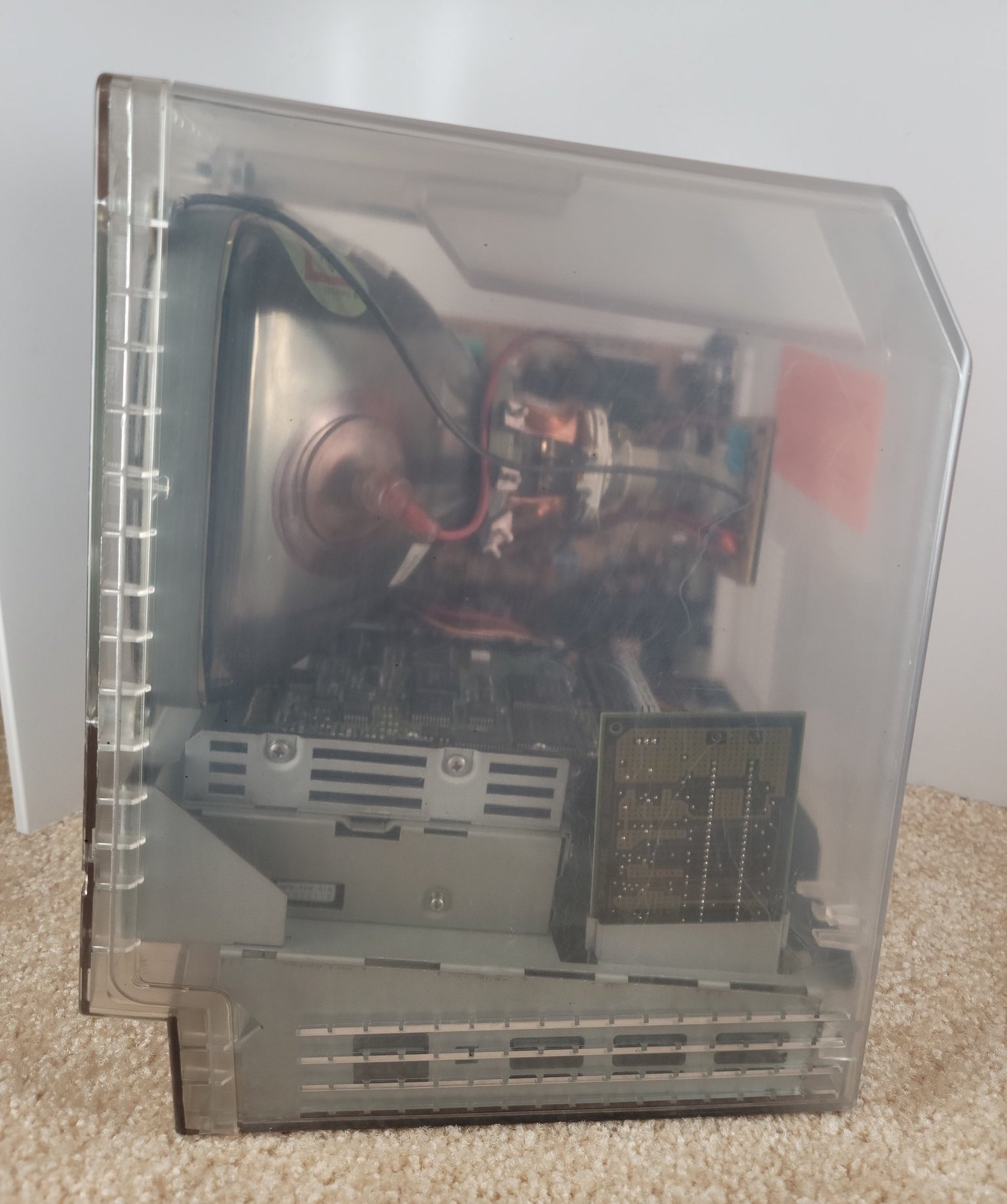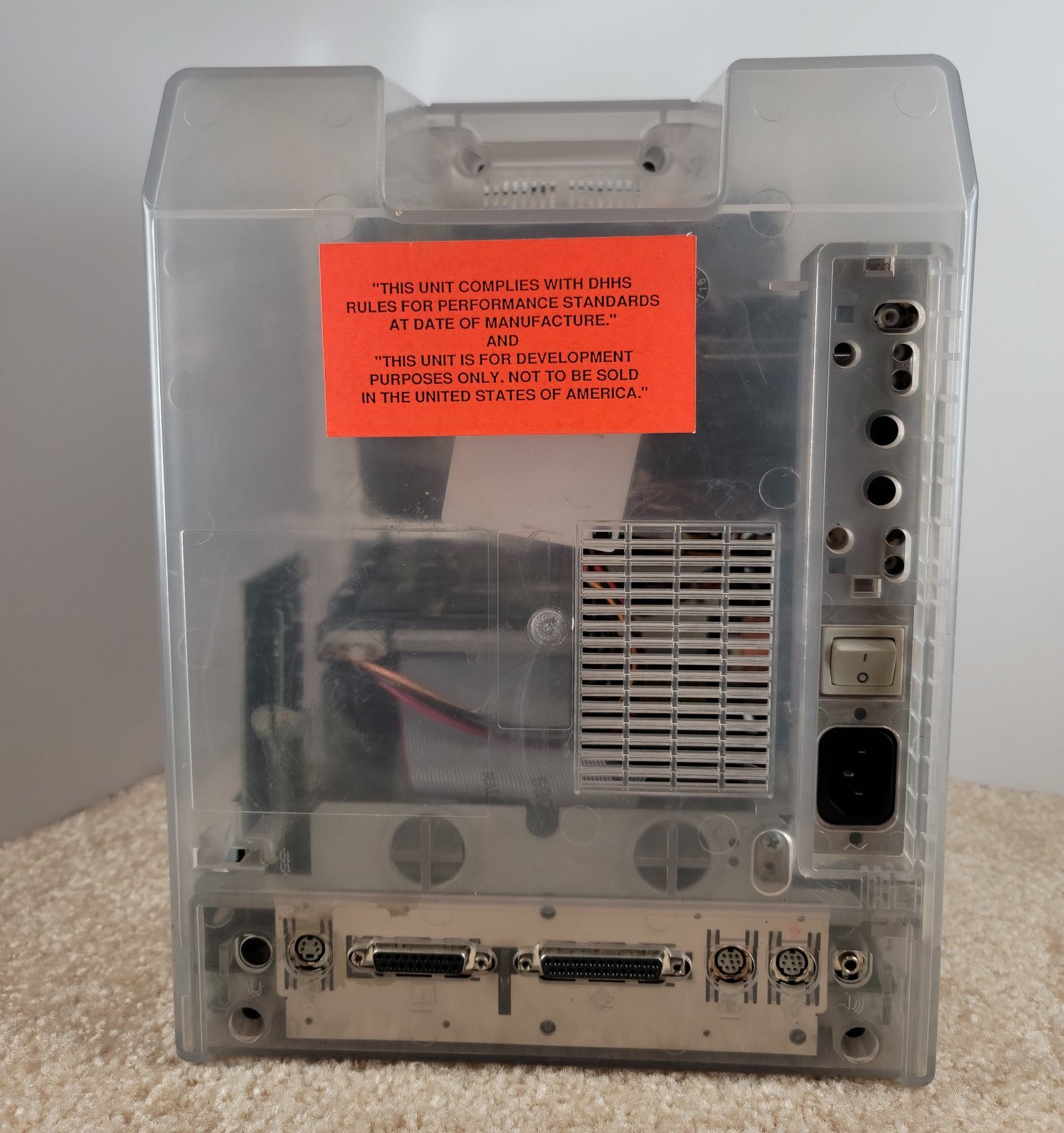
Twitter user @DongleBookPro has shared images of a prototype Macintosh Classic with a translucent casing.


The final retail Macintosh Classic used an iconic beige plastic, so it is rare to see one with a clear casing. This allows it to show off many of the Macintosh's internal parts, such as its nine-inch CRT monitor. It also highlights just how much empty space there was within the Mac.

DongleBookPro did not share any further information about the machine, but Apple has been known to prototype its devices using translucent casings, such as for the Apple Newton or the Macintosh Portable M5120. These prototypes with clear casings are very rare and fetch high prices when they come to auction.

DongleBookPro regularly posts images of unreleased Apple devices and prototypes. In August, they revealed images of an unreleased first-generation iPod touch prototype with a 2013 Mac Pro-style glossy black finish and a prototype first-generation Mac mini with a built-in dock for an iPod nano.
Article Link: Images of Prototype Apple Macintosh With Clear Casing Shared Online
Last edited:

